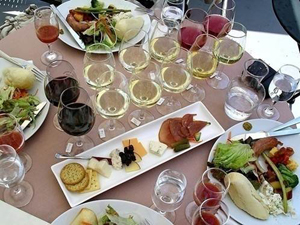 |
|
|
|
|
| Cuisines | Herbal | Spice | Curry | Yeast | Recipe | ||||||
|

Pairing Food & Wine : The single most important aspect of wine and Food pairing is not color.But body. Delicate or lightly flavored foods work best with light-bodied wines. Stronger, heavier foods should be paired with medium to full-bodied wines. Traditional PairingsThe basic rule used to be to pair white wines with fish and white meats like chicken; red wines with red meats. Ultimately, this style of pairing really relates more to body than to color. So, it works, to a degree. But this pairing rule is limiting. Mirror PairingsThis approach has the body, texture and characteristics of the wine reflect those of the food. If there is indeed a best way to pair wine with food, this would be it. For example, the white wine with fish rule would keep you from an excellent pairing of broiled salmon and Pinot Noir, as the red wine with meat rule would preclude serving Sauvignon Blanc with veal. Body to body pairing offers greater variety along with great taste. Remember, too, that sauces play a major role in pairing because they can completely change the taste and texture of a dish. A lightly flavored sauce can complement a delicate wine, but a heavy sauce needs some body in its wine partner. Difficulty PairingsThere are few foods that can't be paired with complimentary wine. Those that can be difficult are very spicy foods (except for horseradish and mustard). These can work well with wines that are slightly sweet. The key is to avoid very tannic or acidic varieties. Smoked fish can make wine taste slightly metallic. Again, wines that are slightly on the sweet side can provide a good match. Most chocolate is so sweet and mouth-coating, it tends to annihilate most wines. A good rule of thumb for chocolate or any dessert choice is to be sure that the wine is as sweet or sweeter than the dessert itself. |











